Just How Good the NES Can Sound: Stage Ones
|
26 February 2010
This is merely the beginning of what will probably become an extended series that examines the wonderful sound capabilities of the NES hardware, not to mention the additional capabilities of the Famicom (given its two cartridge pins designed to support external sound enhancements), and the Famicom Disk System (thanks to its 2C33 application-specific integrated circuit, which included additional sound hardware, namely primitive wavetable synthesis and FM synthesis capabilities). For the moment, though, let's focus on what the oldie but goldie NES could crank out:
--Five sound channels (two pulse wave, one triangle wave, one white noise, one differential pulse-code modulation)
--Final channel also capable of pulse-code modulation
It may not look like much, but over the life span of the NES game developers eked out every little ounce of power from this primitive sound architecture. The very best tunes from this era can pull their weight even by today's standards. They may not produce symphony quality sound, but they demostrate elegance and minimalism at their best. Since I've already covered the phenomenal soundtrack of Mega Man 2, let's focus on some of the best tracks that greet you when a game begins.
This is just a start, and I'm sure there will be more to follow.
|
|
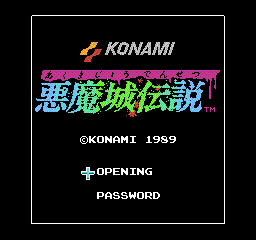 |
Not all Castlevania's across all regions are made equally. When Akumajou Densetsu (a.k.a. Castlevania III) came out in Japan, it included Konami's mighty VRC6 chip, which added three audio channels and even smoothed sprite animation. Unfortunately, only the Japanese Famicom hardware could support this particular chip, so it was not included in the versions of Castlevania III released outside Japan. How big of a difference can one chip make? Give the track below a listen:
Akumajou Densetsu - Stage 1-1
It could easily be mistaken for a 16-bit composition. I dare not mention the number of times I've wished a Genesis game sounded this good.
|
|
Now compare the above clip to the one without the VRC6 chip:
Castlevania III - Stage 1-1
Complexity and depth take a major hit. Everything sounds tinnier, lacking the richness that Japanese gamers enjoyed. You can't blame Konami. The non-Japanese hardware didn't contain the necessary additional cartridge pins to support the VRC6 chip. You can, however, blame Nintendo for not providing the superior versions of this game on the Virtual Console.
Nevertheless, no matter which version of Castlevania III you're listening to, this is clearly one of the most impressive soundtracks you can find on the NES. Konami had basically mastered the hardware by this point. |
|
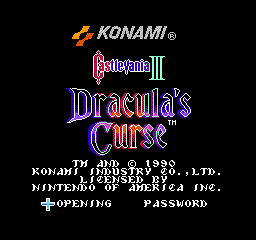 |
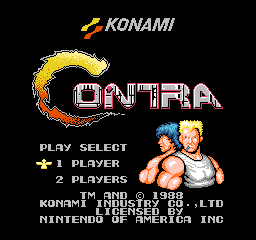 |
Maybe you've never played this game before. (Hint: The Virtual Console version is way better than the Xbox Life Arcade one!) In other words, you're a fool. Whatever! Just listen to this frickin' clip!
Contra - Stage 1
Doesn't that get you pumped up? Not only is the gameplay some of the best ever seen on the NES, you've also got one of the most amazing soundtracks. Most people even agree that the music is better than the arcade version! The first track may be the best—listen to how the song drops you into the jungle, builds in intensity, and then finally reaches a frenetic beat-driven climax—but everything afterwards is of an equally high caliber. |
|
The gameplay to this beat 'em up classic feels a little tight and restrictive on the good old NES hardware, but give this track a proper listen and you'll discover the game's most under appreciated strength:
Double Dragon - Stage 1
It starts off pretty innocuously with some fluffy drum beats, builds a little bit, you let your guard down, it repeats, and then kicks into high gear: A guitar riff combines with intense drum beats. This is brilliant composition, especially when you consider the time (1988!), which was early in the life span of the NES. While Double Dragon is clearly no River City Ransom in terms of gameplay, you have to be impressed by the rich and dynamic sound. |
|
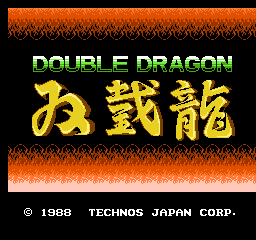 |
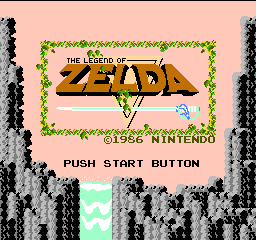 |
Close your eyes and pretend for a moment that you never played this game or heard about it. Listen to the rising notes, the hopeful melody...
Legend of Zelda - Overworld
Now understand that the sound for this game was developed circa 1986, and it fit on eight kilobytes worth of Nintendo sound format. That's right, you've written emails larger than the music for this game! The moment the game begins you can hear the adventure, despite the limitations of five sound channels and primitive instruments. While the music for the NES made remarkable progress over subsequent years, this theme—despite its simplicity, or perhaps because of it—remains one of the most memorable musical scores to ever grace a video game console. |
|
Some musical tracks are legendary—you play them, and millions of people instantly recognize the track. In especially rare circumstances, the music comes from a video game. Here is one of those examples:
Super Mario Bros. - Stage 1-1
This happy, go-lucky theme is without rival. No game has stolen or equaled it, because you don't mess with the Mario Bros. If you do, well, they'll flip ya. They'll fly ya for real. (Anyone remember The Usual Suspects?) What an amazingly light-hearted tone to the sound. Run that time down, though, and you'll find the music suddenly speeds up to pressure you to get your a$$ moving faster. You quickly transition from silly fun to the intensity of needing to complete the stage before dying with no apparent in-between. Brilliant. |
|
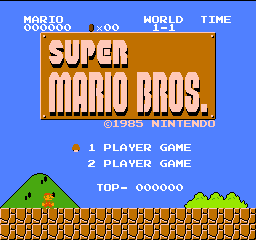 |
|